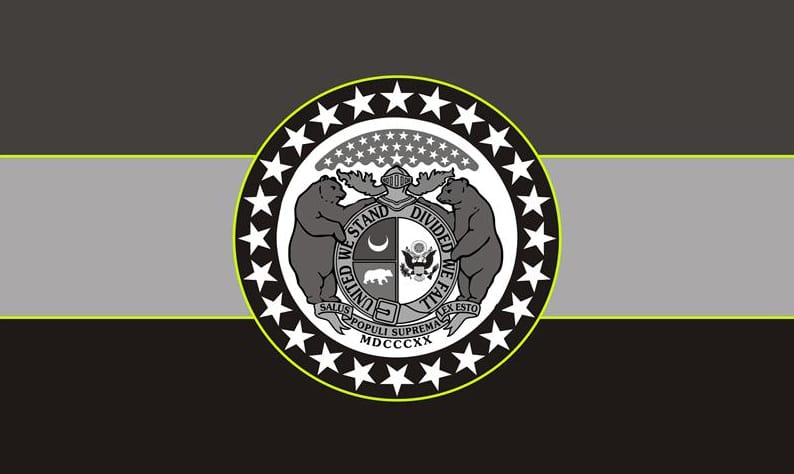

We are Attorneys and We are Riders
We Represent Missouri Cyclists
Had a Bicycle Crash in Missouri?
Contact Ben Dodge to see if the bicycle crash lawyers at Bike Accident Attorneys (BAA) can help. Unlike other lawyers who attempt to represent cyclists, our BAA lawyers actually ride and race their bicycles as well as appear and win in court. Most attorneys are just pencil pushers. We are court room litigators who are passionate about riding our bikes and we have associated local counsel in other states to allow us to help you in your state. Based on our expertise and experience we have also been admitted in other states to appear in court for our bicycle crash clients on a case by case basis. We can help you directly or ensure that you get the quality help you need in your state. Contact Ben Dodge now to see how we can protect your rights.
3 Tips on Choosing the Best Bicycle Crash Lawyer and Avoid Being Scammed
So how do you know if you have the best lawyer? There are 3 things to investigate when hiring a bicycle lawyer that can help you avoid a scammer. Some of that depends on what you think the “best” really means. To me, it is simple. The “best” lawyer will get you to the most advantageous position possible with as little cost as possible. That’s it. Nothing else to it. I have seen too many lawyers give up or miss out on incredible opportunities for their clients because of their own egos arguing the irrelevant issues or pushing too hard in a direction that only generates their own fees as opposed to the results the client would rather have.
The most advantageous position is sometimes not even what the client comes in asking for. I can’t tell you how many times I probably talked myself out of a job in an initial consult because what the client wanted actually puts them in a worse position and I wasn’t afraid to tell them so. It would have been so much easier to just tell them what they desperately wanted to hear, help them feel heard and let them vent a little. All just tell them we better hurry up and rush to court so they can be vindicated. When in reality, that won’t help them at all. So that is what many lawyers do- they try to figure out what the client wants emotionally and then sell them a legal service that matches that emotional need and of course charge them for it based on whatever they think the client is able to pay.
Obviously not all attorneys are this cold-hearted. Many of us actually care. Many of us strive to do right by the client as opposed to just trying to do right by the pocket book.
Here are some general things to watch out for when looking for an attorney, especially a bicycle accident lawyer (I don’t like the word accident, I prefer “crash” – but most of the world uses the term accident and I understand why, so I sue it too). Here are the issues to watch out for:
1) Specific Knowledge
Do they have the specific knowledge required to handle your case? Just because they graduated from law school doesn’t mean they know anything about cycling! In fact, in my opinion, most of the country doesn’t know anything about cycling. It is crazy that all sorts of professionals from police offices charged with enforcing cycling safety to insurance adjusters responsible for finding fault don’t know anything about cycling laws. This is especially true with local rules, ordinances, and even more so with knowledge of local customs and implied expectations of cycling culture and more. Now fast forward to the moment when you are looking for an attorney to help you with your crash (your bicycle accident case) and you see a billboard on the side of the freeway, or a TV commercial, or even a Google search where the words cycling lawyer were used… How much specific knowledge of bicycle cases do you think they really have? Ask them how often they ride? Ask them what their favorite route is? Ask them if they could buy any bike on the planet what would it be and why? These questions will help you quickly identify if they are even remotely plugged into the cycling community and whether or not they have specific knowledge relating to cycling. Why is this important? SIMPLE- as a cyclist you already know that most people (drivers) hate that we are out on the roads. You already have an uphill court battle of public opinion. Being right on some traffic issue isn’t enough for us. Your lawyer must know this intimately in order to successfully navigate the complex negotiations of your case with the insurance company and opposing attorneys and then ultimately in a court room where you can bet no one on the jury will be a cyclist.
Also on the topic of specific knowledge. How many cases like this issue have they handled? What were the outcomes? How confident do you feel with their answers to these questions? Specific case knowledge is helpful. Do they have experience with the opposing insurance company? With that specific police department? With your judge? And on and on.
Specific knowledge is very helpful and you can’t buy it with expensive marketing on billboards, commercials, etc. It is earned with blood, sweat, and sometimes tears through years of experience.
2) Desk or Courtroom
The next thing to investigate is whether or not the attorney you’re thinking about hiring is a desk lawyer (I fondly refer to these lawyers as pencil pushers) or a courtroom lawyer. There is a need for all sorts of lawyers. But unless you are planning on having your bicycle accident attorney draft a will or some contract for you, then you want a courtroom lawyer not a pencil pusher.
I know this is a guess, but in my experience it seems like 95% of lawyers, especially the ones who end up on billboards and commercials, are just pencil pushers. Once their cases get to tough they refer them out to a real lawyer to finish the courtroom stuff for them. Most attorneys talk a big talk in their consult with potential clients about how good they are, but when push comes to shove and they have to actually prove it to you in a courtroom with you watching, their peers (opposing lawyers on the other side of your case) and in front of a judge and jury- they simply freak out and completely drop the ball or settle for less than you should ever take just to avoid the scary courtroom.
Don’t mistakenly hire a pencil pusher. Hire a bicycle accident lawyer who thrives in the courtroom. One simple question to help catch them off guard is ask them when is the last time they were in court? What was it about? What kind of hearing was it? What was the argument they proposed and made to the judge? How did it turn out? These simple questions will help you find out if they are pencil pushers or not. Their hesitation or odd answers are a dead give away that they are likely misleading you on their courtroom abilities and experience.
We are courtroom lawyers, sometimes even going multiple times per week to court. We file lawsuits, we don’t just write a few meaningless settlement letters and sell our clients on how good the settlement is- we prove it to our clients.
3) Do You Recognize Them from a Billboard or Commercial?
Yes I said that right, do you actually recognize them from a billboard or a TV commercial? Why is this even a thing? Well, it sounds harsh but those lawyers out there spending hundreds of thousands of dollars per year (for some they spend that per month) just to recruit new clients may be struggling to get their current and past clients to even refer to them… Yep, what if your lawyer was so good and you were so impressed that you happily sent business to him/or her? See how powerful that is? I’m not saying that everyone who advertises in our line of work is a horrible lawyer. What I am saying is that it is a bit suspect since advertising is NOT cheap and it begs the question as to why they have to advertise in the first place? Is their reputation with their own clients so bad that they have to find an alternative source to finding clients? Possibly. I’m one of those guys who avoids, in fact runs away from any professional I see on a billboard. I’d much rather consult a trusted friend and get their opinion as to whom I should see or NOT see based on their experience.
Not all lawyers who advertise are bad. But like I said, I personally run away from any professional on a billboard or TV commercial. A good old fashioned referral has always proved to be much better much more often. Just sayin’.

These are just 3 of the many things to look out for when you hire a bicycle accident lawyer. Call my office up and we can chat over the phone sometime about all the other million things to look out for like attorney billable hour quotas, bonus structures, professional reputation among peers, and so much more!
We are here for you. We got your back. We protect our own like you’re a member of our tribe. Good luck. Be safe out there and keep the rubber side down.
Contact Ben Dodge and let the lawyers in the Bike Accident Attorneys National Network help you. We will assist you in your case and/or find someone for you in your state that we can trust and recommend. We have your back. We are here for you.
#MyLawyerDoesntSuck


Need a Consultation?

Missouri Bicycle Accident Statistics
Resident Population
6,093,000
Total Traffic Fatalities
945
Pedalcyclist Fatalities
8
Percentage of Total Traffic Fatalities
0.8%
Pedalcyclist Fatalities per Million Population
1.31
Missouri Bicycle Statutes
300.347. Riding bicycle on sidewalks, limitations – motorized bicycles prohibited.
- No person shall ride a bicycle upon a sidewalk within a business district;
(2) Whenever any person is riding a bicycle upon a sidewalk, such person shall yield the right-of-way to any pedestrian and shall give audible signal before overtaking and passing such pedestrian;
(3) No person shall ride a motorized bicycle upon a sidewalk.
300.330. Bicycle lane regulations
The driver of a motor vehicle shall not drive within any sidewalk area except as a permanent or temporary driveway. A designated bicycle lane shall not be obstructed by a parked or standing motor vehicle or other stationary object. A motor vehicle may be driven in a designated bicycle lane only for the purpose of a lawful maneuver to cross the lane or to provide for safe travel. In making an otherwise lawful maneuver that requires traveling in or crossing a designated bicycle lane, the driver of a motor vehicle shall yield to any bicycle in the lane. As used in this section, the term “designated bicycle lane” shall mean a portion of the roadway or highway that has been designated by the governing body having jurisdiction over such roadway or highway by striping with signing or striping with pavement markings for the preferential or exclusive use of bicycles.
300.350. Riding bicycles, sleds, roller skates, by attaching to another vehicle, prohibited.
No person riding upon any bicycle, motorized bicycle, coaster, roller skates, sled or toy vehicle shall attach the same or himself to any vehicle upon a roadway.
300.411 and 304.678 Overtake bicycles at a safe distance
- The operator of a motor vehicle overtaking a bicycle proceeding in the same direction on the roadway, as defined in section 300.010, RSMo, shall leave a safe distance, when passing the bicycle, and shall maintain clearance until safely past the overtaken bicycle.
- Any person who violates the provisions of this section is guilty of an infraction unless an accident is involved in which case it shall be a class C misdemeanor.
304.285. Red light violations
Any person operating a motorcycle or bicycle who violates the provisions of section 304.281 or section 304.301 by entering or crossing an intersection controlled by a traffic control signal against a red light shall have an affirmative defense to that charge if the person establishes all of the following conditions:
(1) The motorcycle or bicycle has been brought to a complete stop;
(2) The traffic control signal continues to show a red light for an unreasonable time;
(3) The traffic control is apparently malfunctioning or, if programmed or engineered to change to a green light only after detecting the approach of a motor vehicle, the signal has apparently failed to detect the arrival of the motorcycle; and
(4) No motor vehicle or person is approaching on the street or highway to be crossed or entered or is so far away from the intersection that it does not constitute an immediate hazard.
The affirmative defense of this section applies only to a violation for entering or crossing an intersection controlled by a traffic control signal against a red light and does not provide a defense to any other civil or criminal action.
307.180. Bicycle and motorized bicycle, defined.
As used in sections 307.180 to 307.193:
- The word bicycle shall mean every vehicle propelled solely by human power upon which any person may ride, having two tandem wheels, or two parallel wheels and one or two forward or rear wheels, all of which are more than fourteen inches in diameter, except scooters and similar devices;
- The term motorized bicycle shall mean any two or three-wheeled device having an automatic transmission and a motor with a cylinder capacity of not more than fifty cubic centimeters, which produces less than three gross brake horsepower, and is capable of propelling the device at a maximum speed of not more than thirty miles per hour on level ground. A motorized bicycle shall be considered a motor vehicle for purposes of any homeowners- or renters- insurance policy.
307.183. Brakes required.
Every bicycle and motorized bicycle shall be equipped with a brake or brakes which will enable its driver to stop the bicycle or motorized bicycle within twenty-five feet from a speed of ten miles per hour on dry, level, clean pavement.
307.185 Lights and reflectors, when required – standards to be met.
Every bicycle and motorized bicycle when in use on a street or highway during the period from one-half hour after sunset to one-half hour before sunrise shall be equipped with the following:
(1) A front-facing lamp on the front or carried by the rider which shall emit a white light visible at night under normal atmospheric conditions on a straight, level, unlighted roadway at five hundred feet;
(2) A rear-facing red reflector, at least two square inches in reflective surface area, or a rear-facing red lamp, on the rear which shall be visible at night under normal atmospheric conditions on a straight, level, unlighted roadway when viewed by a vehicle driver under the lower beams of vehicle head-lights at six hundred feet;
(3) Reflective material and/or lights visible from the front and the rear on any moving part of the bicyclists, pedals, crank arms, shoes or lower leg, visible from the front and the rear at night under normal atmospheric conditions on a straight, level, unlighted roadway when viewed by a vehicle driver under the lawful lower beams of vehicle headlights at two hundred feet; and
(4) Reflective material and/or lights visible on each side of the bicycle or bicyclist visible at night under normal atmospheric conditions on a straight, level, unlighted roadway when viewed by a vehicle driver under the lawful lower beams of vehicle headlights at three hundred feet. The provisions of this subdivision shall not apply to motorized bicycles which comply with National Highway Traffic and Safety Administration regulations relating to reflectors on motorized bicycles.
307.188. Rights and duties of bicycle and motorized bicycle riders.
Every person riding a bicycle or motorized bicycle upon a street or highway shall be granted all of the rights and shall be subject to all of the duties applicable to the driver of a vehicle as provided by chapter 304, RSMo, except as to special regulations in sections 307.180 to 307.193 and except as to those provisions of chapter 304, RSMo, which by their nature can have no application.
307.190. Riding to right, required for bicycles and motorized bicycles.
Every person operating a bicycle or motorized bicycle at less than the posted speed or slower than the flow of traffic upon a street or highway shall ride as near to the right side of the roadway as safe, exercising due care when passing a standing vehicle or one proceeding in the same direction, except when making a left turn, when avoiding hazardous conditions, when the lane is too narrow to share with another vehicle or when on a one-way street. Bicyclists may ride abreast when not impeding other vehicles.
307.191. Shoulder riding, allowed but not required for bicyclist operators
- A person operating a bicycle at less than the posted speed or slower than the flow of traffic upon a street or highway may operate as described in section 307.190, or may operate on the shoulder adjacent to the roadway.
- A bicycle operated on a roadway, or the shoulder adjacent to a roadway, shall be operated in the same direction as vehicles are required to be driven upon the roadway.
- For purposes of this section and section 307.190, “roadway”, means that portion of a street or highway ordinarily used for vehicular travel, exclusive of the berm or shoulder.
307.192. Bicyclists may signal right turn with right arm
The operator of a bicycle shall signal as required in section 304.019, RSMo, except that a signal by the hand and arm need not be given continuously if the hand is needed to control or operate the bicycle. An operator of a bicycle intending to turn the bicycle to the right shall signal as indicated in section 304.019, RSMo, or by extending such operator’s right arm in a horizontal position so that the same may be seen in front and in rear of the vehicle.
307.193. Penalty for violation.
Any person seventeen years of age or older who violates any provision of sections 307.180 to 307.193 is guilty of an infraction and, upon conviction thereof, shall be punished by a fine of not less than five dollars nor more than twenty-five dollars. Such an infraction does not constitute a crime and conviction shall not give rise to any disability or legal disadvantage based on conviction of a criminal offense. If any person under seventeen years of age violates any provision of sections 307.180 to 307.193 in the presence of a peace officer possessing the duty and power of arrest for violation of the general criminal laws of the state or for violation of ordinances of counties or municipalities of the state, said officer may impound the bicycle or motorized bicycle involved for a period not to exceed five days upon issuance of a receipt to the child riding it or to its owner.
Missouri State Law for Motorists Interacting with Bicyclists
307.188. Rights and duties of bicycle and motorized bicycle riders. Every person riding a bicycle or motorized bicycle upon a street or highway shall be granted all of the rights and shall be subject to all of the duties applicable to the driver of a vehicle as provided by chapter 304, RSMo, except as to special regulations in sections 307.180 to 307.193 and except as to those provisions of chapter 304, RSMo, which by their nature can have no application.
Explanation: Motorists must treat bicycles with the same regard as they would any other vehicle; bicyclists have the same rights under traffic law as do other vehicles. And, on the other hand, bicycles must obey the same traffic laws in the same way as motor vehicles, with very, very limited exceptions.
304.012. Highest Degree of Care. Every person operating a motor vehicle on the roads and highways of this state shall drive the vehicle in a careful and prudent manner and at a rate of speed so as not to endanger the property of another or the life or limb of any person and shall exercise the highest degree of care.
Explanation: Motorists may not do anything, even something that otherwise appears to be legal, that endangers a bicyclists, pedestrian, or other motorist.
304.678. Overtaking bicycles at a safe distance 1. The operator of a motor vehicle overtaking a bicycle proceeding in the same direction on the roadway, as defined in section 300.010, RSMo, shall leave a safe distance, when passing the bicycle, and shall maintain clearance until safely past the overtaken bicycle. 2. Any person who violates the provisions of this section is guilty of an infraction unless an accident is involved in which case it shall be a class C misdemeanor.
Explanation: When passing a bicycle, you must leave a safe distance when passing and not return to the right part of the road until safely past the bicyclist. Passing unsafely is a traffic offense punishable by driver license points, fines, and, if an accident results, even jail.
304.016.4 When passing is allowed. No vehicle shall at any time be driven to the left side of the roadway under the following conditions: (1) When approaching the crest of a grade or upon a curve of the highway where the driver’s view is obstructed within such distance as to create a hazard in the event another vehicle might approach from the opposite direction;
Explanation: Motorists often attempt to pass bicyclists as they are traveling around curves or approaching the crest of a hill. But squeezing dangerously past the bicyclist or pulling blindly into the oncoming lane are both illegal. So if the lane is wide enough to pass the bicyclist, leaving a safe distance between your vehicle and the bicyclist, while remaining on the right half of the road, then you may pass. However, if safely overtaking the bicyclist requires you to pull onto the left side of the roadway, then the law requires you to wait behind the bicyclist until your view ahead is clear.
300.340 Opening and closing vehicle doors. No person shall open the door of a motor vehicle on the side available to moving traffic unless and until it is reasonably safe to do so, nor shall any person leave a door open on the side of a motor vehicle available to moving traffic for a period of time longer than necessary to load or unload passengers.






